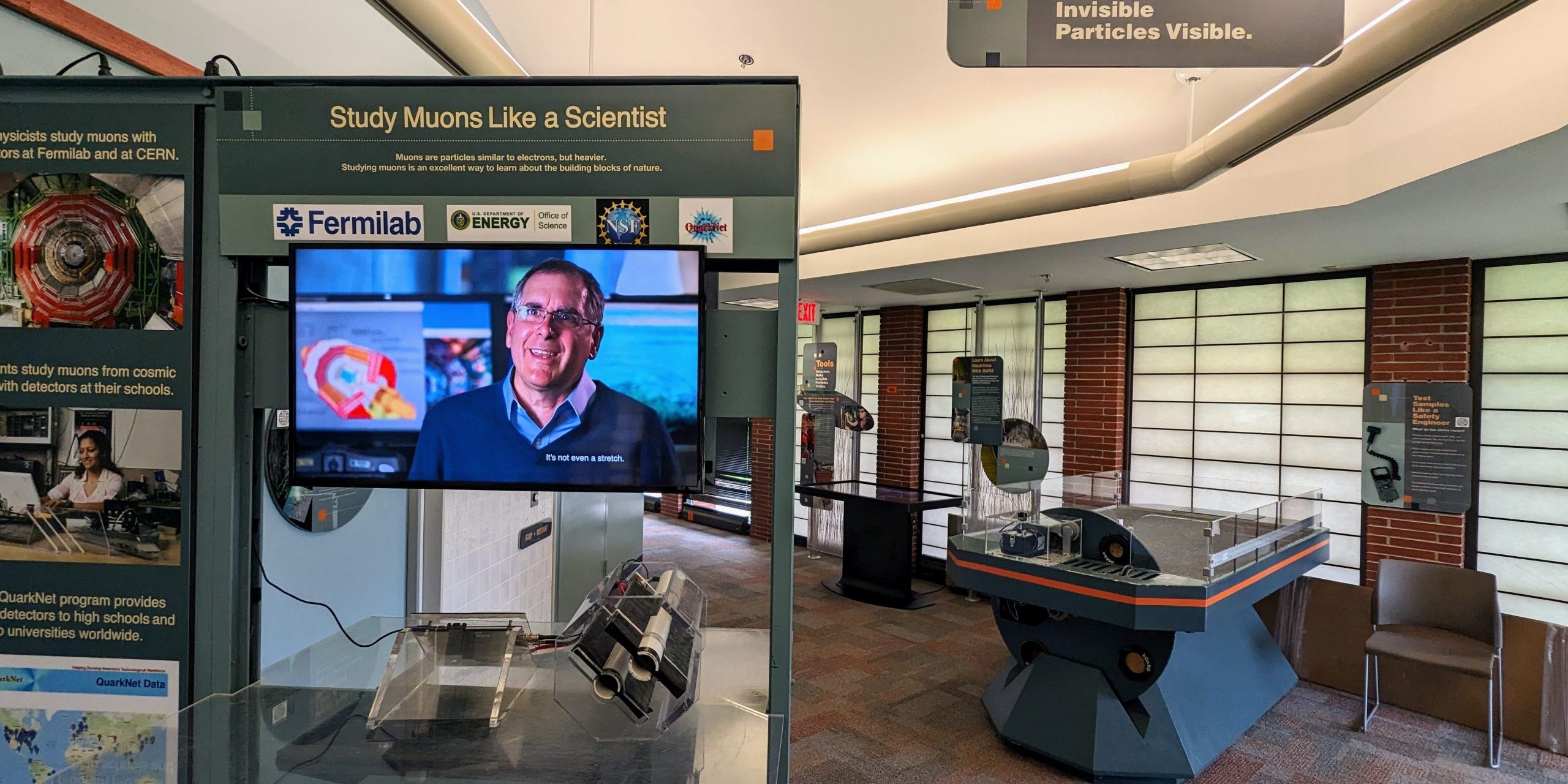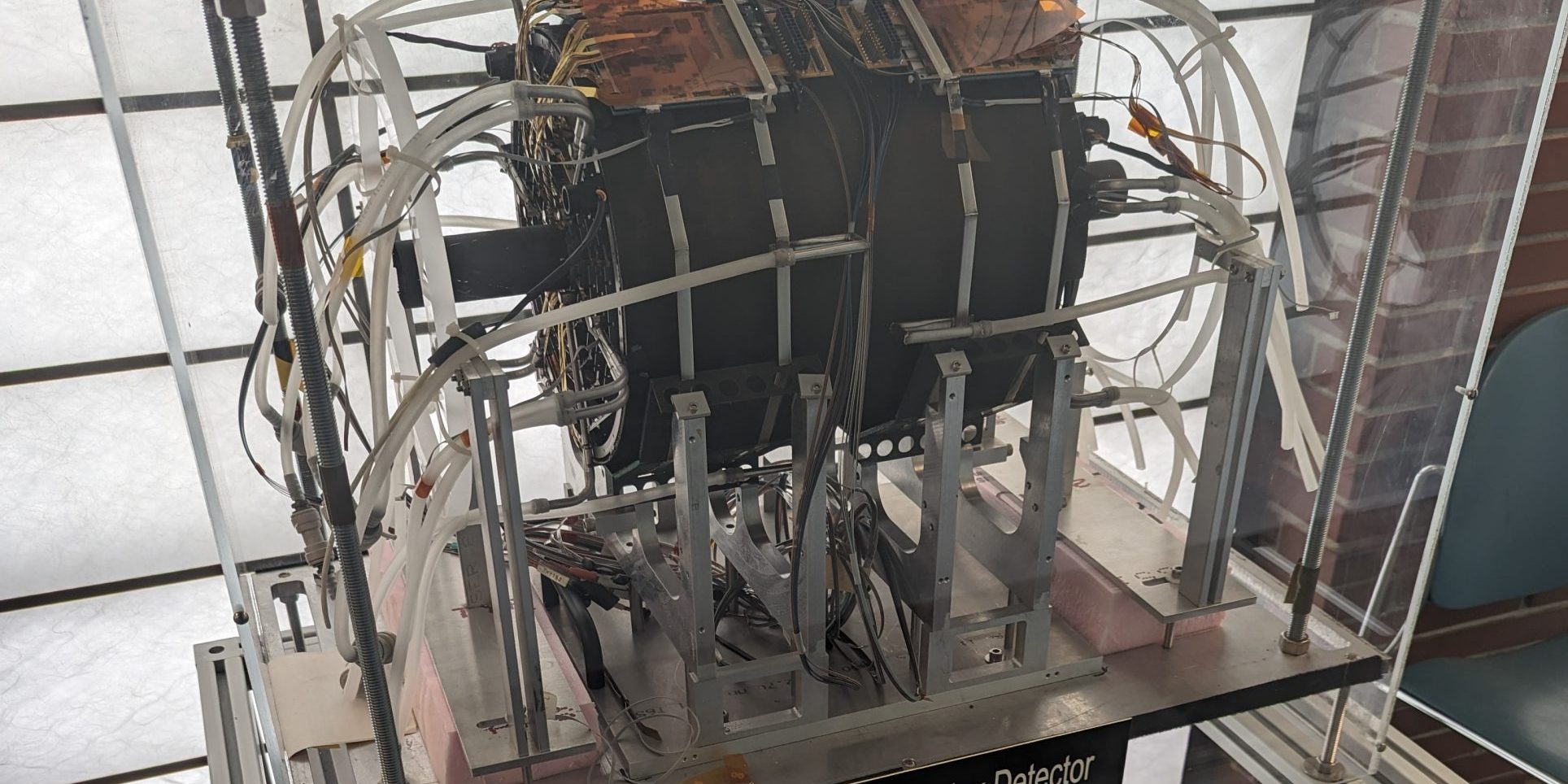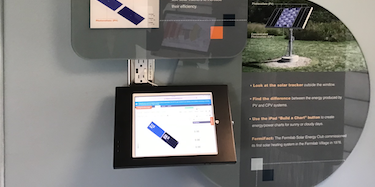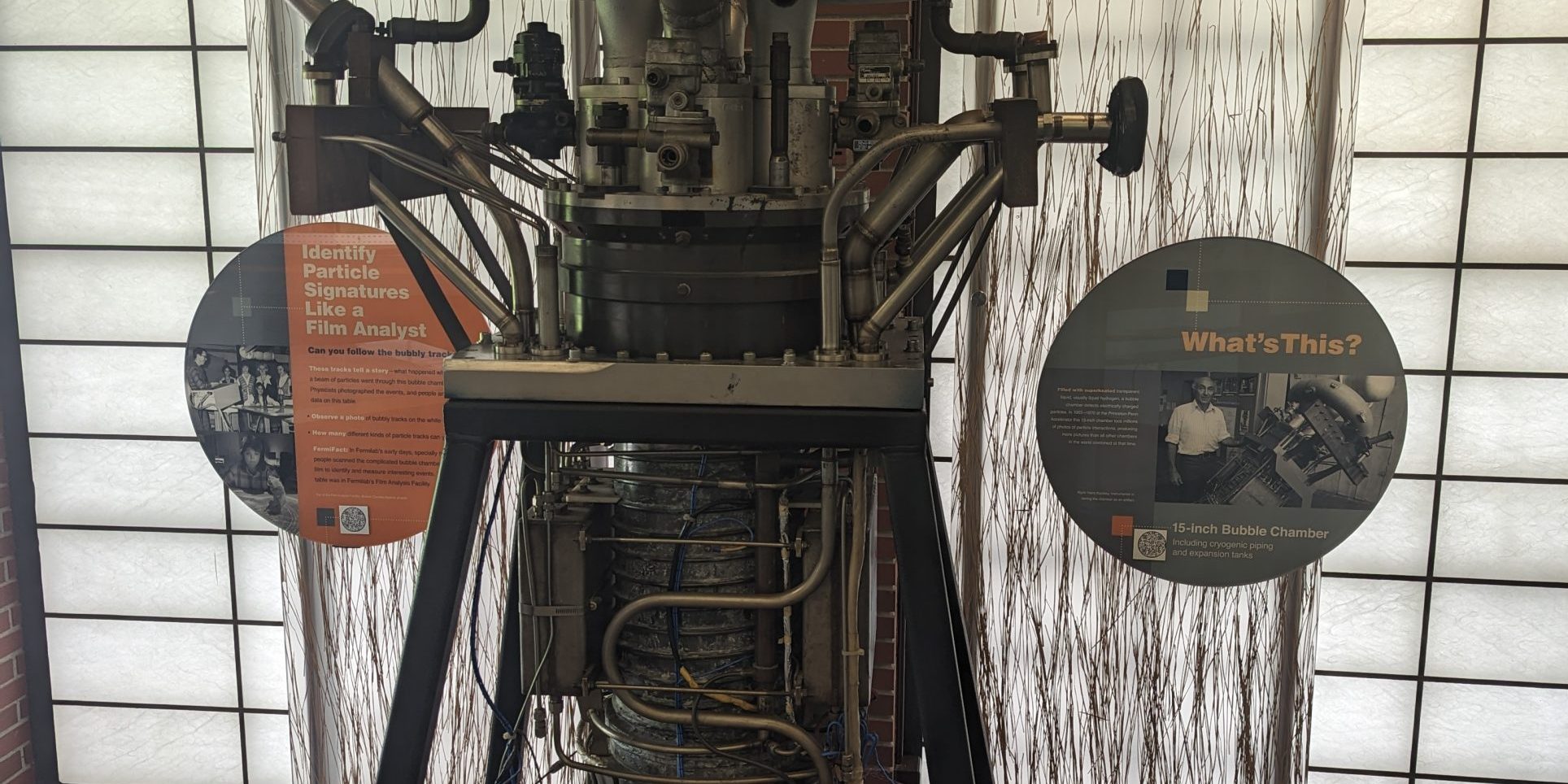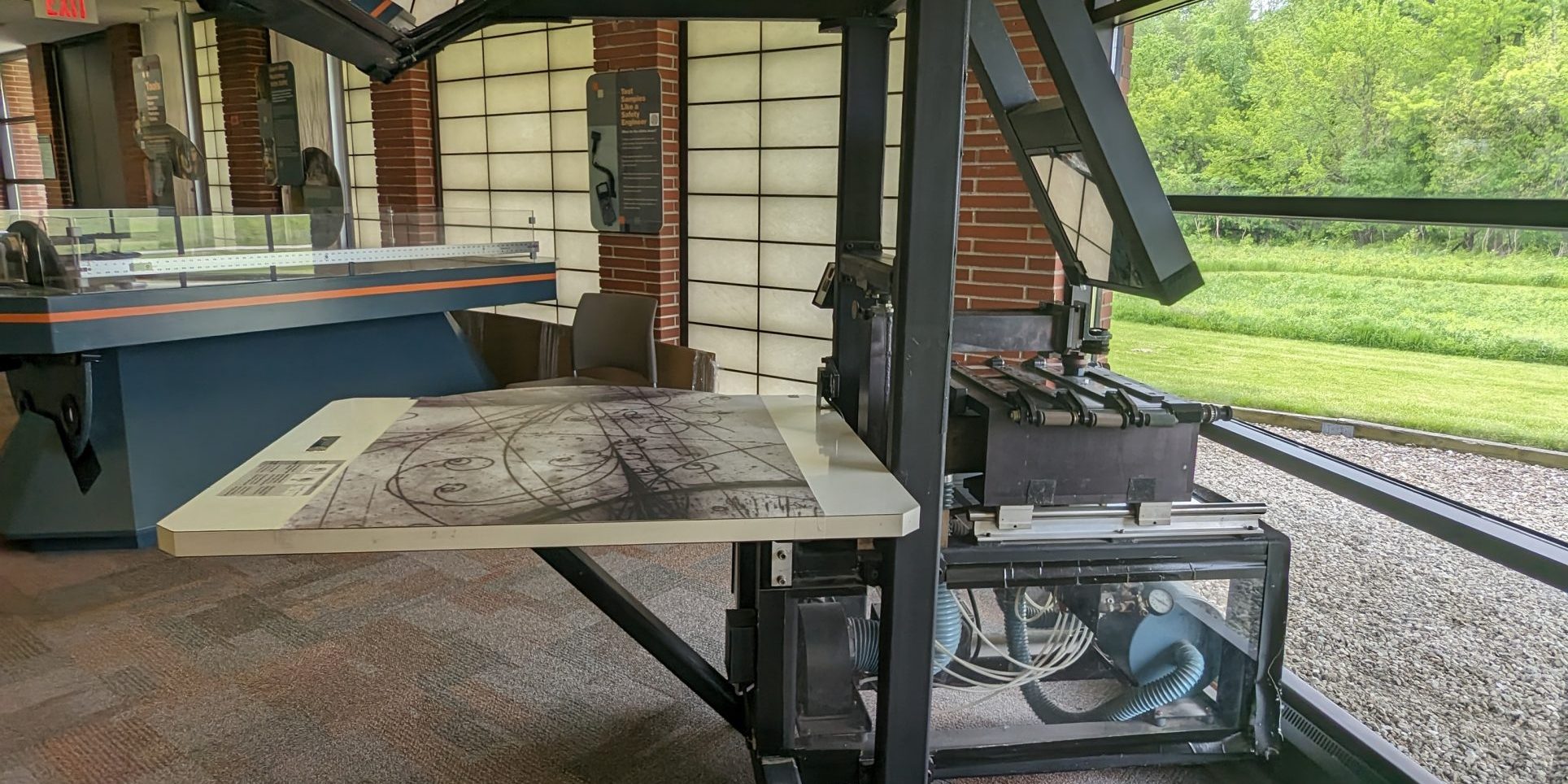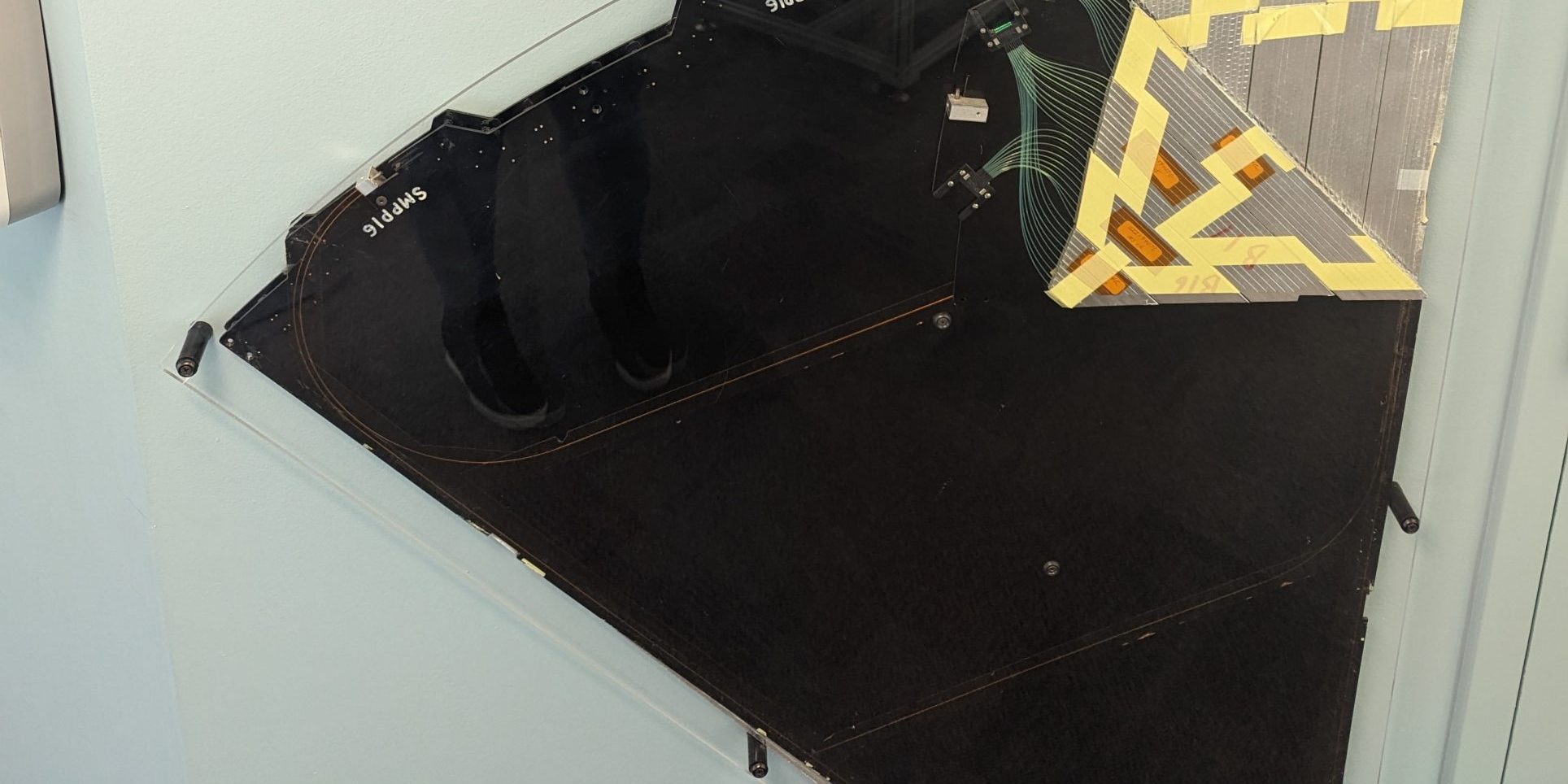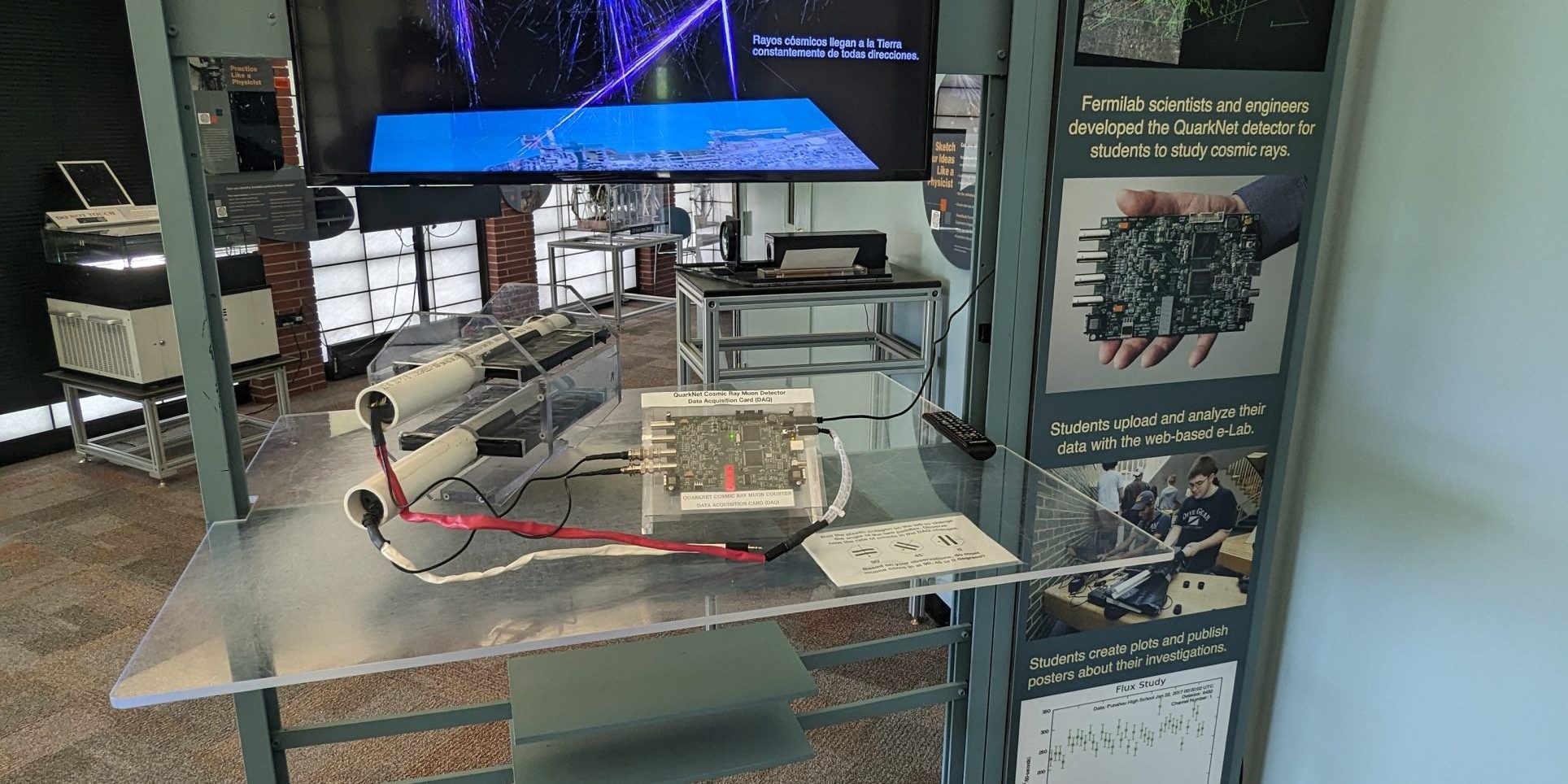This room includes first generation detectors, cosmic ray detectors, collider and neutrino detectors.
In this room we have tools, called detectors that can show particle tracks and help us study particles.
Spotlighted Exhibits
The science of particle detection relies on the interactions that occur when particles encounter matter. When a charged particle interacts with matter, it excites and ionizes molecules along its path. A cloud chamber is a particle detector that uses evaporated alcohol to make a “cloud” that is sensitive to passing particles. When a particle zips through a cloud, it creates tracks (like airplanes do in the sky) that are visible to the naked eye.
High-energy cosmic rays are protons and heavier nuclei of atoms that travel across the cosmos. When they crash into Earth’s atmosphere, they create sprays of secondary particles that rain down on Earth. Thousands of cosmic ray muons (fundamental elementary particles) per minute per square meter arrive at sea level. This shower of subatomic particles passes unnoticed through all kinds of objects, including us, but cosmic ray detectors can detect them.
Neutrinos are the most abundant matter particles in the universe. They have zero electric charge, and they can travel thousands of kilometers in a small fraction of a second. A Neutrino can go through the Earth without a single interaction. Neutrinos come in three types, called flavors. A muon neutrino is always produced with a muon, and an electron neutrino – with an electron. Neutrinos can morph from one type to another – this is called neutrino oscillation. Fermilab builds special neutrino detectors to study these mysterious particles.
Dark matter remains undetected because it doesn’t emit, absorb, or scatter light, but its gravitational pull is strong evidence for its existence. Detecting dark matter will require very sensitive instruments such as interferometers, in which the interference or overlap of two waves is employed to make precise measurements. The MAGIS-100 (Matter-wave Atomic Gradiometer Interferometric Sensor) is a long-baseline atom interferometer at Fermilab. This exhibit explains how MAGIS-100 detector will be used to detect dark matter and other phenomena that require very sensitive detectors.

